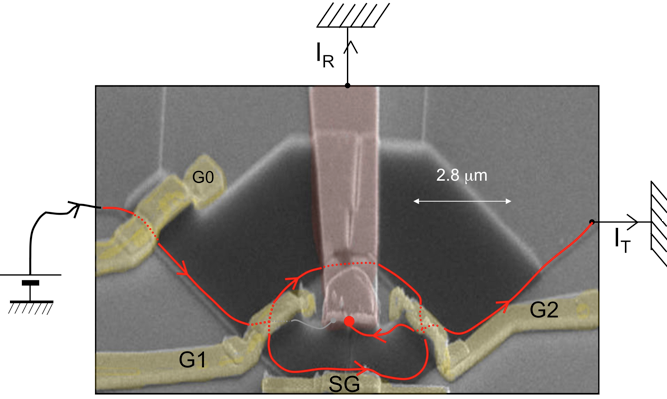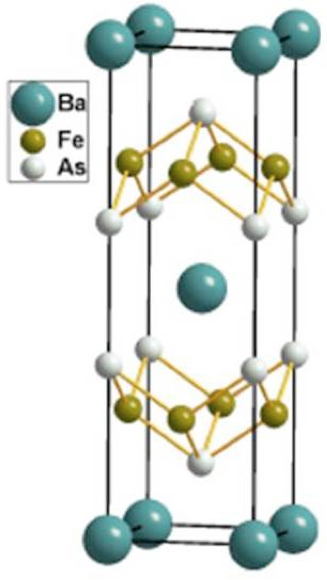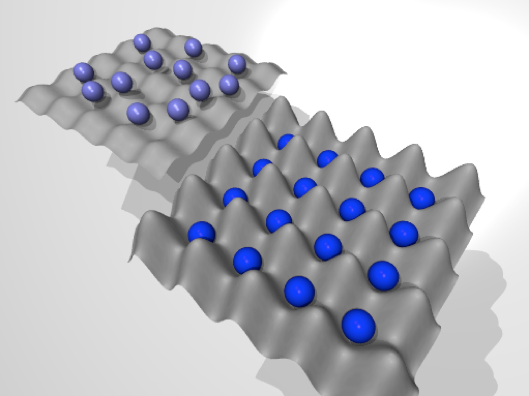Quantum Matter: from the elementary to the Strongly correlated
The emergence of common topics between atomic, molecular and optical physics community and the community of condensed matter is a new trend in physics.
Quantum information processing, which started with optical quantum techniques (atoms and trapped ions, single photons) brings to light realizations in condensed matter systems such as superconducting circuits or quantum dots.
Those systems can make “artificial atoms” and could improve quantum information processing devices. Researchers working with cold atoms begin to be interested in questions that preoccupied the condensed matter field for a long time: systems with strong correlation, entanglement, and coherence.
We hope that these new researches will lead to a better understanding of high-temperature superconductivity. The field of quantum transport which deals with waves of matter (electrons or atoms) spreading under the influence of several forces in a solid or in a laser beam, appears as new field in between those two communities.
This theme aims at promoting the researches on these fields thanks to collaborations between condensed matter and atomic, molecular and optical physics. This theme will more precisely shed light on :
- Quantum information : elementary quantum systems ( atoms, ions, molecules, NV centres for diamonds, artificial atoms used as superconducting electrical circuits, cold atoms quantum simulators, qubits photonics. Quantum technologies (cryptography).
- Coherence and correlations: control of decoherence mechanisms in mesoscopic conductors, graphene, highly correlated electrons, superconductivity, unconventional superconductivity, spin liquids, cold matter.
- Topological phases studies (Orbit spin coupling, Edge states in oxides and cold atoms), High-temperature superconductivity (Pseudogaps, Spin waves), Ferroelectricity
 Interféromètre Mach-Zehnder dans lequel un électron en régime de Hall quantique révèle des interférences analogues à celle d’un dispositif optique. Les électrons suivent les bords du dispositif, et les ondes associées sont diffractées à l’aide de séparateurs de faisceaux. La recombinaison des deux chemins électroniques peut etre controlée par des partes électroniques qui induisent des oscillations dans le courant. Interféromètre Mach-Zehnder dans lequel un électron en régime de Hall quantique révèle des interférences analogues à celle d’un dispositif optique. Les électrons suivent les bords du dispositif, et les ondes associées sont diffractées à l’aide de séparateurs de faisceaux. La recombinaison des deux chemins électroniques peut etre controlée par des partes électroniques qui induisent des oscillations dans le courant. |
 Exemple d’un réseau cristallin dans lequel un nouveau supraconducteur à base de fer est réalisé. Exemple d’un réseau cristallin dans lequel un nouveau supraconducteur à base de fer est réalisé. |
 Schéma d’un réseau optique pour atomes froids. L’interférence de plusieurs faisceaux lasers crée le réseau, que les atomes remplissent aléatoirement ou de façon ordonnée. Schéma d’un réseau optique pour atomes froids. L’interférence de plusieurs faisceaux lasers crée le réseau, que les atomes remplissent aléatoirement ou de façon ordonnée. |
||
| Dans les deux réseaux, les particules (électrons ou atomes) subissent de fortes corrélations quantiques déterminées par l’effet tunnel et par l’interaction entre particules. Les propriétés de transport dans ces systèmes sont complexes, révélant la supraconductiité, et divers diagrammes de phase. | ||||
List of the projects funded by topic 1
Contact : Chris Westbrook